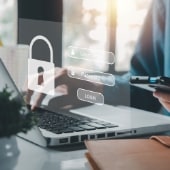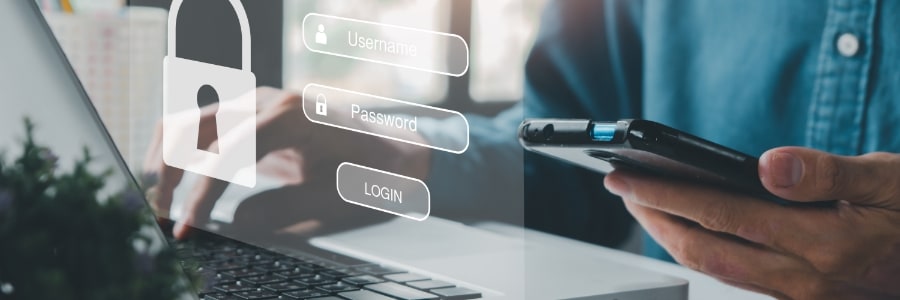
Lock your screen
Always lock all your devices as soon as you stop using them. This way, you are safe from the simplest hack of all: someone opening a social media site on your device while your account is still signed in.
Locking your phone is easy enough, but in case you didn’t know, here’s how to lock your computer:
On a Mac:
- Press Ctrl+Command+Q.
- Click the Apple logo on the top left corner of the screen, and select Lock screen.
On a Windows device:
- Press Windows key+L.
- If there are multiple users using the device, click the Start button on the bottom left corner of the screen, then select User > Lock.
Use strong passwords
One of the easiest ways for hackers to gain access to your account is by launching brute force attacks to guess a weak or easily guessed password. Be sure to use a strong password that is at least eight characters long and includes a mix of uppercase and lowercase letters, numbers, and symbols. It’s also a good idea to change your password regularly to further reduce the risk of someone gaining access to your account.
It is best to use a password manager like 1Password, LastPass, or Dashlane, as these allow you to generate, save, and retrieve complex passwords.
You can also enable multifactor authentication, which requires users to fulfill at least one more identity verification step after entering their username and password. The extra step or steps can involve scanning your fingerprint or entering a one-time passcode on an authentication app. Even if hackers have your password, they won’t be able to log in to your account without the additional authentication requirements.
Enable social media security features
Facebook can help you monitor who’s accessing your account and from where. On any web browser, log in to Facebook and click on Your profile, which is the icon located at the upper-right corner of the page. Select Settings & privacy, then click Settings > Accounts Center. From the Accounts Center, choose Password and security to get more information.
Under the “Where you’re logged in” section, you’ll see a list of the places and devices you’re logged into. If you don’t recognize a particular location or device, that means someone else has logged in as you and is likely using your account for fraudulent or malicious purposes. Log them out by clicking the checkbox on the row indicating the malicious login and selecting Log out, and then report the incident immediately.
Unfortunately, as of this writing, Twitter doesn’t have the same option of checking unrecognized logins. This makes implementing two-factor authentication even more necessary.
Hackers can also take over your Facebook and Twitter accounts through third-party services to which you’ve given access to your profiles, so make sure to double-check what you have approved. Here’s how to do it:
- Facebook: Go to Settings > Accounts Center > Password and security > Apps and websites to view and manage third-party services that use Facebook to log you into the accounts you have with them.
- Twitter: Go to Settings and privacy > Security and account access > Apps and sessions to check and edit the list of third-party apps linked to your account.
Lastly, check the permissions Facebook and Twitter have on your smartphone or tablet.
- Android: Go to Settings > Apps > App permissions.
- iOS: Go to Settings and find Facebook and Twitter under the app list to manage which parts or features of your phone (such as the camera and speaker) they have access to.
Post less personal information online
As much as we all love to share our lives with others on social media, it’s important to remember that not everything needs to be shared online. Hackers can use information like your birthdate, home address, and phone number to gain access to your accounts or even steal your identity. So, limit the amount of personal information you share on social media and think twice before posting anything that could be used against you.
By following these tips, you can significantly prevent Facebook and Twitter hacking.
Cybersecurity is a sprawling issue — and social media privacy is but one of the many things you need to stay on top of. For 24/7 support, call our team of experts today.



